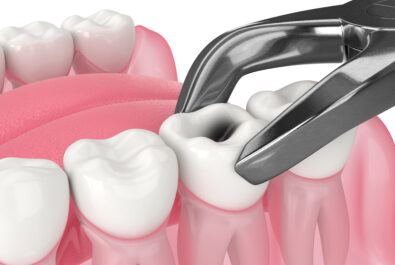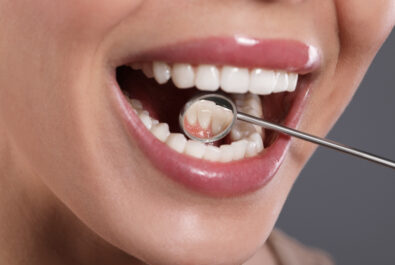As we’ve learned in our in-depth examination of missing teeth, a number of risk factors – both within and outside of your control – can make you more susceptible to the primary causes of tooth loss. So, if gum disease, decay, or an accident claim one or more of your permanent teeth, what’s your next step? In the past, patients could choose from dental bridges, partial dentures, and full dentures. These days, dental implants are used to provide a longer lasting, more stable anchor for artificial teeth. Today, we’re looking at the two most common dental prosthetics, or replacement teeth, that your dentist might use to restore your smile.
Single Crown Topped Implant
When you see illustrations of dental implants on billboards or on sidebar ads online, you’re probably looking at a single dental crown implants. This innovative dental prosthetic has three basic parts:
- The crown. Often made from porcelain or a porcelain-zirconia mix, a dental crown is designed to match the shape and coloring of your remaining natural teeth. It replaces the visible part of the missing tooth and aids in chewing and speaking.
- The implant post. This part of the implant replaces the root of a missing tooth. Made from titanium, the post is surgically implanted into the jaw and, as it heals, it bonds to the surrounding bone tissue.
- The abutment. This essential component connects the implant to the crown (or bridge or denture plate).
Single crown implants provide a great tooth replacement option if you have one or more missing teeth in different areas of the mouth. Implants can also support specially designed dental bridges for patients missing 2-4 teeth in a row or who have complications that might interfere with single crown placement.
Implant Secured Dentures
It wouldn’t make sense to replace all the teeth on a dental arch with single crown dental implants: the bone simply couldn’t support all those implant posts and the cost would be prohibitive. Instead, dentists prefer to place 4-8 implant posts in order to anchor a full denture plate. A wealth of research shows that people who have lost all of the teeth on their top and/or bottom dental arch experience increasing difficulty eating, speaking, and socializing, which usually results in a dramatically reduced quality of life. Removable dentures, the kind that sit on top of the gums, can restore some chewing and speaking ability, but they can’t compare to implant secured dentures. In fact, a study published in the Journal of Oral and Maxillofacial Research showed that implant denture wearers experience an 80-90% increase in chewing ability, even with notoriously difficult to eat foods like raw carrots and steak.
About Shawn Hofkes, DDS
With advanced training in oral and maxillofacial surgery and certification in oral and IV sedation, Shawn Hofkes, DDS is qualified to provide dental implant services for patients living with tooth loss from our state-of-the-art dentist office in Cerritos, CA. To schedule your appointment or consultation with Dr. Hofkes, contact us today. We proudly serve patients of all ages from Cerritos, Lakewood, Long Beach, Buena Park, and all surrounding communities.













